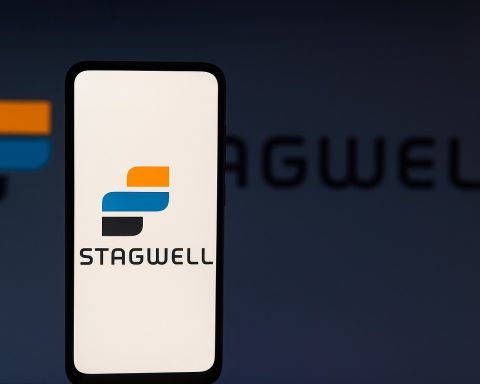Updated: Nov. 6, 2025 (6.11.2025)
At a glance
- Global equities wobbled this week as AI‑linked stocks fell; analysts warn the market is highly concentrated in tech. [1]
- “Big Short” investor Michael Burry disclosed >$1B in put options tied to Nvidia (NVDA) and Palantir (PLTR)—a bearish wager that ignited debate across Wall Street. [2]
- Palantir CEO Alex Karp blasted the move as “bats— crazy,” underscoring tensions around AI valuations. [3]
- After Tuesday’s sell‑off, parts of the market showed signs of stabilizing today, with investors parsing whether the drop is a “healthy” reset or the start of something bigger. [4]
What’s happening
Artificial‑intelligence bellwethers stumbled this week, dragging the S&P 500 and Nasdaq into their sharpest one‑day declines in nearly a month before a tentative rebound. The wobble matters because tech now accounts for roughly 36% of the S&P 500—more than during the dot‑com era—and approaches half of the index when megacaps like Alphabet, Amazon, Tesla and Meta are included. With tech’s forward P/E near 32 (vs. ~23 for the broader index), any AI‑related disappointment can quickly ripple through global markets. [5]
The weakness wasn’t confined to the U.S.: stocks in Asia and Europe also fell as investors questioned whether an AI‑driven valuation boom is cooling, though several strategists called the slide “profit‑taking” rather than panic. [6]
The Burry factor: a $1.1B bet against AI darlings
Regulatory filings show Michael Burry’s Scion Asset Management bought put options referencing ~5 million Palantir shares and ~1 million Nvidia shares as of Sept. 30—positions with a combined notional value just under $1.1 billion that comprised the bulk of Scion’s reported portfolio last quarter. Note that 13F filings are backward‑looking snapshots; they don’t reveal strikes or expirations, and positions may have changed since quarter‑end. [7]
Burry has also renewed public skepticism about AI‑mania, drawing comparisons to past bubbles—ammunition for bears who argue that soaring capex and valuations need flawless execution. [8]
Pushback from Palantir
The disclosure prompted an unusually fiery response from Palantir chief Alex Karp, who called shorting PLTR and NVDA “bats— crazy” in a TV appearance, insisting both firms sit at the cash‑generating core of AI adoption. The clash captures a broader divide: true‑believers see years of AI‑led earnings growth ahead; skeptics see momentum, concentration risk and fragile sentiment. [9]
Why this wobble matters
- Concentration risk: With tech’s weight at ~36% of the S&P 500—and nearly half when including non‑classified megacaps—index performance is unusually tethered to one theme: AI. A stumble in a handful of names can tug the entire market. [10]
- Valuation sensitivity: Elevated forward multiples amplify reactions to earnings, guidance and policy headlines; even “in‑line” results can disappoint when perfection is priced in. [11]
- Global spillovers: This week’s U.S. tech slide echoed across Europe and Asia, underscoring how AI narratives now shape global risk appetite. [12]
What to watch today (Nov. 6, 2025)
- Follow‑through or fade? After Wednesday’s stabilization, watch whether AI‑linked names build support or resume lower—especially into the close. [13]
- Guidance and capex tone: Management commentary around AI infrastructure spend remains a swing factor for sentiment. [14]
- Macro cross‑currents: Rates, dollar moves and chip‑export headlines can turn into catalysts when valuations are stretched. [15]
FAQ: Does a 13F “put” always mean a straight bearish bet?
Not necessarily. A 13F shows positions held at quarter‑end—not real‑time changes—and lists notional exposure, not premium paid. Puts can express a directional view or serve as hedges in a broader strategy. The filing also omits strike, tenor and any offsetting positions. In other words, it’s a clue, not a confession. [16]
The bottom line
Burry’s billion‑dollar put disclosure arrived just as AI leaders were losing altitude, sharpening focus on the market’s tech dependence and lofty multiples. Whether this week proves to be a brief reset or the first crack in the narrative will hinge on guidance, spending discipline and the next wave of AI‑driven earnings. For now, volatility—and scrutiny—are back. [17]
Sources: Reuters market analysis and sector weightings; Reuters global sell‑off coverage; Washington Post on Palantir’s response; Investopedia and 13F trackers on Scion’s positions; Business Insider on Burry’s AI skepticism; Nasdaq/Dow Jones on today’s stabilization. [18]
This report is for informational purposes only and is not investment advice.
References
1. www.reuters.com, 2. www.investopedia.com, 3. www.washingtonpost.com, 4. www.nasdaq.com, 5. www.reuters.com, 6. www.reuters.com, 7. www.investopedia.com, 8. www.businessinsider.com, 9. www.washingtonpost.com, 10. www.reuters.com, 11. www.reuters.com, 12. www.reuters.com, 13. www.nasdaq.com, 14. www.reuters.com, 15. www.reuters.com, 16. www.investopedia.com, 17. www.reuters.com, 18. www.reuters.com





